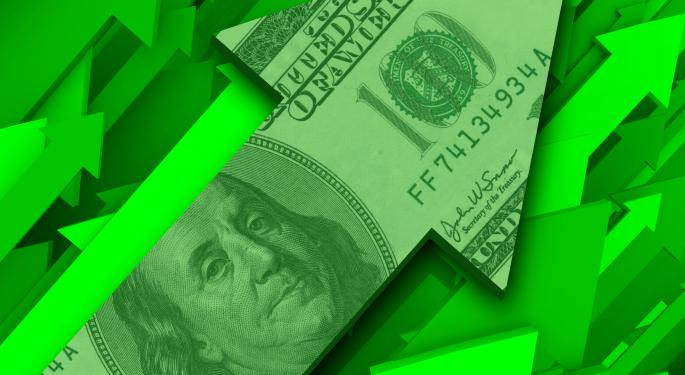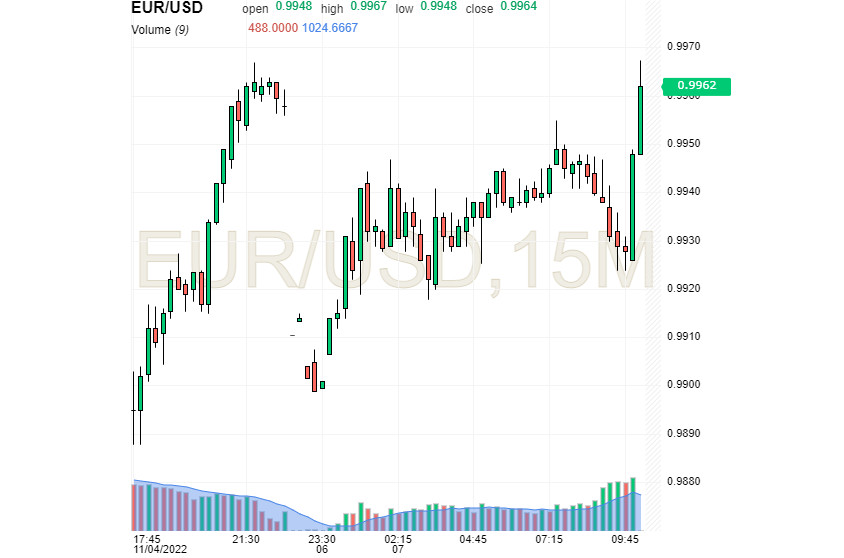
The US dollar has kicked off the new week with a rapid increase. The euro, on the contrary, was unable to rebound. The greenback is gaining momentum despite a short-term drop last week.
On Monday morning, it advanced significantly against the euro. Its growth was facilitated by positive US macro stats published at the end of last week and the latest economic reports from China. By the end of October, the Chinese authorities announced an unexpected contraction in imports and exports. After the release of disappointing data from China, fears about a looming recession increased in markets, fueling demand for safe-haven assets, including the US dollar.
As the risk-on sentiment decreased, the US dollar won luster win investors again. The US dollar, the most popular safe-haven asset, rose the most. Its further growth may be stimulated by the US inflation report for October, which is due on Thursday, October 10. According to preliminary estimates, inflation is expected to slow down to 8%, logging the fourth decline in the indicator.
Analysts are confident that the Fed mainly takes into account inflation figures when making monetary policy decisions. Since early 2022, the Fed has raised the key rate six times to curb galloping inflation. It has started to slow down thanks to monetary tightening. However, after moving away from an all-time high of 9.1%, inflation still remains above the 2% target level.
Inflation will hardly drop considerably because of high wages in the United States. According to the Nonfarm Payrolls report for October, the economy added 261,000 new jobs, exceeding the previous forecast readings. At the same time, last month the unemployment rate rose to 3.7% from 3.5%. Economists at Capital Economics said that given the wage growth, it would be hard to push inflation to the 2% target. For this reason, the Fed is likely to stick to aggressive tightening.
The greenback was somewhat stuck in the narrow range due to market uncertainty. Judging by the data on the US dollar index (USDX), last week large traders significantly reduced their long positions on USD. If this trend persists, the US currency may lose momentum. However, many analysts are betting on a further rally of the greenback. On November 7, the EUR/USD pair was trading at 0.9962, showing steady growth. However, UBS analysts stress that in March 2023, the pair may fall to 0.9600. It is quite curious given that now there are plenty of fundamental factors for a rise to 1.0000 and above.

Alan Greenspan, the former Fed Chairman, expects a buoyant rally of the US dollar in 2023. Such a scenario is possible even if the regulator makes smaller rate hikes. If inflation peaks in early 2023, the US currency will continue to grow, Greenspan stressed.
This year, the US dollar has been rising mainly amid more aggressive tightening compared to other central banks. Many USD rivals, in particular the euro and the pound sterling, have reached multi-year lows due to the divergence in monetary policy. In addition, the Fed is actively shrinking its balance sheet, boosting the US dollar in the long term.
Analysts at UBS assume that next year the greenback is likely to retain its upside potential. At the moment, it is too early to talk about the end of the rally as inflation remains high. UBS believes that the central bank will continue to aggressively raise rates until a steady decrease in inflation. In the fourth quarter of 2022, the greenback is projected to grow and in the first quarter of 2023, it may reach new highs. This might be the first step towards the possible slowdown of the Fed's tightening hike cycle, analysts believe.





















